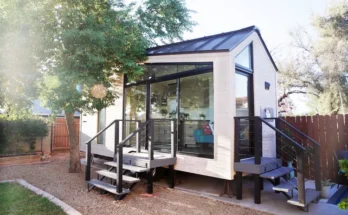When the Airbus A380 first took flight, many questioned whether such a massive aircraft had a place in commercial aviation. But for Emirates, the world’s largest operator of the A380, the aircraft hasn’t just worked—it’s become a game changer.
Emirates has made the A380 a symbol of its global brand, flying these double-decker giants across major routes and redefining luxury air travel. Here are five key reasons why the Airbus A380 really works for Emirates.
1. High-Density Routes Need High-Capacity Jets
One of the main reasons the A380 works for Emirates is the airline’s focus on long-haul, high-traffic routes. With its main hub in Dubai, Emirates connects major global cities such as London, Sydney, New York, and Mumbai. These routes are consistently busy and require large aircraft to meet demand without overloading airport slots.
The A380 can carry over 800 passengers in an all-economy layout or about 500 in a three-class setup (which Emirates uses). That means Emirates can move more people per flight while maximizing gate space and airport efficiency. The A380 is ideal for airports where slots are limited but passenger demand is high.
2. Hub-and-Spoke Model Built for Giants
Emirates operates on a hub-and-spoke model, meaning most flights funnel through its Dubai hub. The A380 is a perfect aircraft for this system. Instead of flying several smaller planes between the same destinations, Emirates can consolidate passengers onto fewer, larger A380 flights. This improves fuel efficiency per passenger and cuts down on crew and maintenance costs.
Dubai International Airport is also uniquely equipped to handle the A380 with dedicated gates, airbridges, and boarding lounges specifically designed for the aircraft. This infrastructure synergy makes operations smoother and more cost-effective for Emirates.
3. Luxury Experience That Defines the Brand
The A380 is not just about size—it’s also about what’s inside. Emirates has turned this aircraft into a flying hotel. First Class suites come with fully enclosed privacy, shower spas, and personal minibars. Business Class features lie-flat seats and an onboard bar and lounge. Even Economy Class on the A380 gets high marks for comfort and entertainment.
This premium experience strengthens Emirates’ image as a luxury airline. The A380’s spaciousness allows the airline to offer amenities that simply don’t fit on smaller jets. For travelers, the journey becomes a big part of the experience—and that keeps loyalty high.
4. Fuel Efficiency Per Seat Is Surprisingly Competitive
Though the A380 is massive, its fuel efficiency per seat is better than many think—especially when it’s full. Emirates ensures high load factors (seat occupancy rates), which helps spread fuel and operating costs across more passengers. This makes the A380 cost-effective on the high-demand, long-haul routes that Emirates prioritizes.
Additionally, Emirates has continually upgraded its A380 fleet with newer, more efficient engines and cabin retrofits to enhance performance and reduce emissions.
5. Iconic Status = Brand Power
Lastly, the A380 has become part of Emirates’ identity. When travelers think of Emirates, they often picture the massive double-decker jet. This association adds to the airline’s prestige and brand appeal. The A380 has helped Emirates stand out in a crowded market, offering a unique flying experience that few airlines can match.
Whether it’s a family vacation or a business trip, flying on the A380 feels like an event—and Emirates knows how to deliver that wow factor.
Final Thoughts
While many airlines have moved away from large aircraft in favor of smaller, more flexible models, Emirates has proven that with the right strategy and route structure, the Airbus A380 can still soar. It’s not just a plane for them—it’s a platform for luxury, efficiency, and brand dominance.



